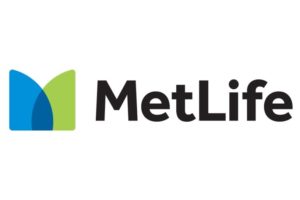For many years, MetLife offered some of the best life insurance in the U.S. And although the company no longer sells to individuals, many people are still curious about this historic company which is why we choose to provide our readers with a brief summary of some of the highlights of this great company.
Compare over 50 top life insurance companies instantly.
|
About MetLife Life Insurance
For more than 100 years, Metropolitan Life Insurance Company, also known as “MetLife,” has been one of the most well-known carriers in the insurance industry. The company was founded during the Civil War as National Union Life & Limb Insurance Company, initially selling policies to insure northern soldiers. After the war, the company changed its name to MetLife and quickly became one of the leading life insurance providers in the country.
Throughout most of its history, MetLife was a policyholder-owned mutual company. However, the company recently converted to a stockholder-owned, for-profit model. This change allowed MetLife to increase the compensation of its top officers and offer new insurance products.
Today, MetLife and its affiliates offer a wide range of insurance and investment products, employee benefits, and financial planning assistance.
In 2017, MetLife stopped issuing new life insurance policies to individual consumers and spun off its consumer insurance business to a related entity called Brighthouse Life Insurance Company. While some existing policies remain with MetLife, most are now serviced by Brighthouse under the same contractual terms.
Brighthouse, operating under the name “Brighthouse Financial,” sells life insurance and annuities to individual consumers in all 50 states from its headquarters in Charlotte, North Carolina. Meanwhile, MetLife continues to offer group life insurance plans, usually through employers, under the “MetLife” brand.
MetLife Financial Ratings
A.M. Best: A+
S&P: AA-
Moody’s: Aa3
Fitch: AA-
Comdex Ranking: 95
MetLife has earned a well-deserved reputation as one of the strongest and most financially stable insurance companies. With a Comdex score of 95, MetLife comfortably ranks among the top ten percent of U.S. life insurance carriers.
In addition to its impressive Comdex score, MetLife boasts an A+ rating from A.M. Best and strong scores from other major rating providers, placing it just outside the top tier.
MetLife’s annual revenue is just shy of $70 billion, with profits of $6 billion, and its assets total an impressive $740 billion. As a Fortune 100 company with a solid track record, prospective policyholders face very little risk of MetLife becoming financially unable to meet its policy commitments in the foreseeable future.
While Brighthouse Financial is not quite as strong as MetLife, it is still a Fortune 500 company with well over $200 billion in total assets. Brighthouse Financial’s A rating from A.M. Best and Comdex score of 78 are a grade below MetLife’s, but they are still very strong and indicative of minimal policyholder risk.
MetLife Consumer Ratings:
MetLife currently lacks accreditation from the Better Business Bureau, and its B- rating from the BBB is lower than most comparable insurers. This suggests that MetLife may be less responsive to consumer complaints lodged with the BBB.
Customer reviews for MetLife on the BBB’s website are dismal, with an average rating of one star (out of five) based on a sample size of nearly 100 reviews.
According to J.D. Power’s 2020 life insurance study, MetLife’s customer satisfaction score was slightly above the mean for rated companies, with the brightest spot being its claims handling.
Brighthouse Financial, which is a newer company, has received fewer than average consumer complaints to state insurance commissioners, which is a positive sign. Despite not being accredited by the BBB, Brighthouse has earned an A rating from the bureau.
However, Brighthouse’s customer satisfaction rating in J.D. Power’s 2020 study was poor. Brighthouse came in last place out of the 23 companies included in the report. For annuities, Brighthouse did slightly better but still fell below the study average.
The BBB’s sample size for consumer ratings of Brighthouse is too small to draw any reliable conclusions.
What Products Does MetLife Offer?
For individual consumers, MetLife sells home, auto, and dental coverage, along with a few more specialized policies, such as legal insurance and pet insurance.
Through employers, MetLife offers a variety of group plans, including group life insurance, disability, vision, and accident coverage, and supplemental health plans.
MetLife also provides a variety of financial planning products and services, like annuities, investment management, and employer tools for funding pensions, retirement plans, and employee benefits.
Along with individual life insurance policies, Brighthouse Financial also offers an assortment of annuities.
Life Insurance from MetLife:
As of 2017, MetLife no longer issues life insurance policies to individual consumers.
MetLife Final Expense Insurance
In 2014, MetLife introduced a somewhat popular final expense insurance policy. At the time, many people searched out MetLife’s final expense insurance to see how this policy compared to the other options on the market.
MetLife’s Final Expense Whole Life Insurance policy was guaranteed acceptance, which means you were guaranteed to be approved as long as you met the age guidelines and lived in a state where the product is offered.
The guaranteed acceptance life insurance policy was whole life insurance and had the following features:
- Guaranteed Acceptance Life Insurance
- No Exam Required
- No Health Questions
- Available for ages 45-75
- Face amounts from $2,500 – $50,000
- Cash value
If you are looking for a similar final expense insurance policy, we invite you to give us a call or use our final expense quoter.
Group Policies
Now, although the company no longer sells life insurance to individuals, MetLife still provides group policies to employers and remains one of the biggest players in that field.
MetLife’s employer-sponsored group plans include term life, universal life, variable universal life, and accidental death coverage. Term plans also allow employees to purchase supplemental coverage for the named insured and dependent coverage, extending the term life insurance to the employee’s spouse, domestic partner, or eligible children.
Brighthouse Financial focuses on two primary consumer life insurance products: SimplySelect (a term policy) and SmartCare (an indexed UL policy with a long-term care rider).
Brighthouse Financial Term Life Insurance
SimplySelect provides level term life insurance for adults up to age 69 in coverage amounts ranging from $100,000 to $2 million. Coverage maximums are lower for applicants over age 55. SimplySelect comes in term lengths of 10, 20, and 30 years, though the 30-year term isn’t available for applicants aged 50 and older, and applicants from 65 through 69 years can only get the ten-year term.
SimplySelect policies are simplified-issue life insurance, which means that medical history is considered during the underwriting process, but a medical exam is not required. Policies have fixed premiums and can be purchased through independent agents, including some online brokers.
Terminal illness and conversion riders are built into SimplySelect policies. The former allows early access to death benefits if the insured is diagnosed with less than 12 months to live. The latter gives the policyholder the right to convert the term coverage to Conversion Whole Life.
Brighthouse Financial Permanent Life Insurance
Conversion Whole Life is Brighthouse’s permanent whole life insurance policy. As the name suggests, it can only be acquired by converting from a term policy. As with other whole-life policies, it has guaranteed-for-life coverage, accrues interest-earning cash value, and premiums are fixed (though higher than term premiums).
Brighthouse SmartCare
SmartCare is an indexed universal life policy that comes with a built-in long-term care rider, allowing access to policy benefits if the insured requires long-term healthcare. New insureds must be between ages 40 and 75 and can obtain coverage amounts as high as $1 million.
As a permanent IUL policy, SmartCare accrues cash value that grows tax-deferred. Growth can be measured based on one of several indexes chosen by the policyholder (such as the S&P 500), or policyholders can opt for growth at guaranteed fixed rates.
Indexed growth is subject to a cap that limits earnings in strong markets, and cash value can also decrease if the chosen index performs poorly.
If the insured requires long-term care, the LTC rider kicks in after a 90-day waiting period. Policy benefits are then paid out through a fixed monthly payment.
The regular payments allow for flexibility in how funds are used, but proceeds might not cover the full cost of care (or can exceed the actual cost).
Long-term care benefits are paid out for a period of up to two years, and the total benefits paid can reach as high as 95% of the policy’s death benefit.
An optional rider can extend the benefit period by either two or four more years. Any portion of policy proceeds not applied toward long-term care is paid out to the named beneficiary as a death benefit upon the insured’s death.
In most cases, SmartCare applicants do not have to undergo a medical exam, though a review of medical records is part of the underwriting process. Premiums can be paid in one lump sum or over up to five years.
Due to the long-term care rider and short premium payment period, SmartCare’s premiums are generally higher than with an IUL policy that does not include LTC benefits and spreads premiums over a longer period.



